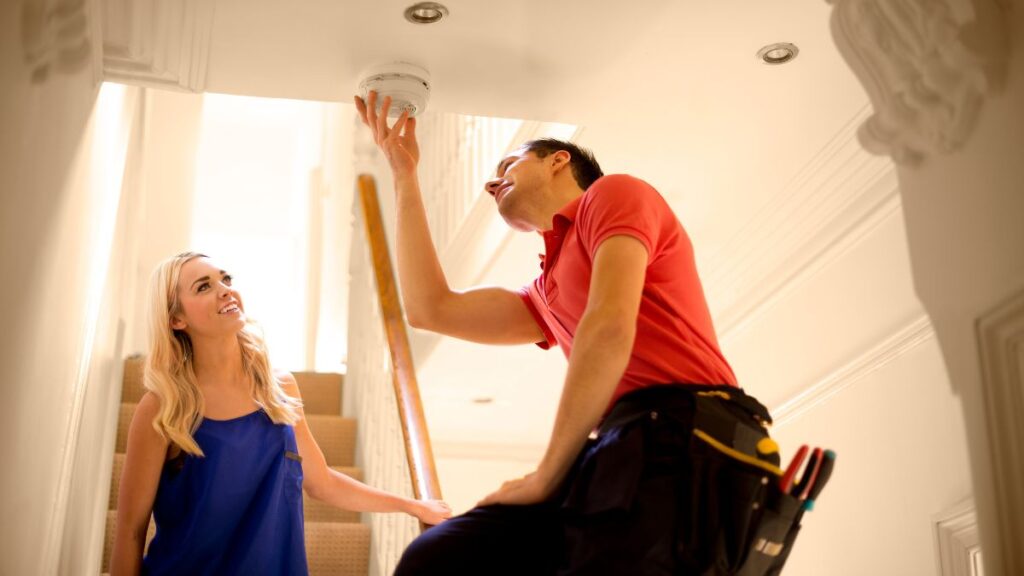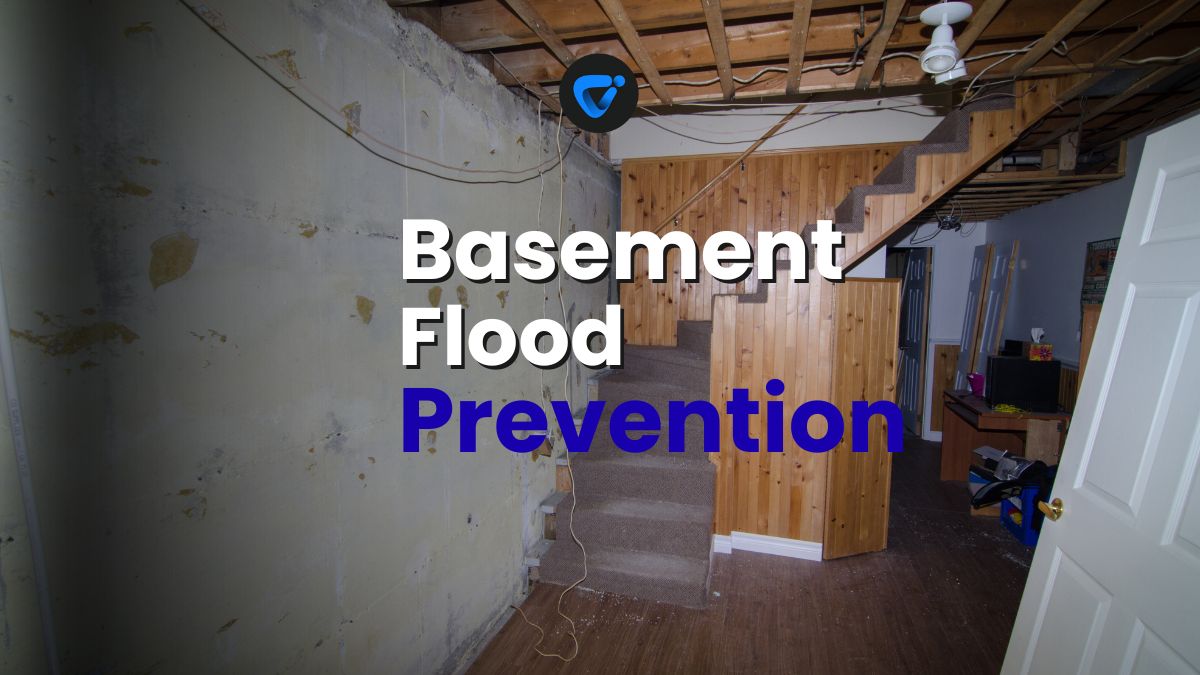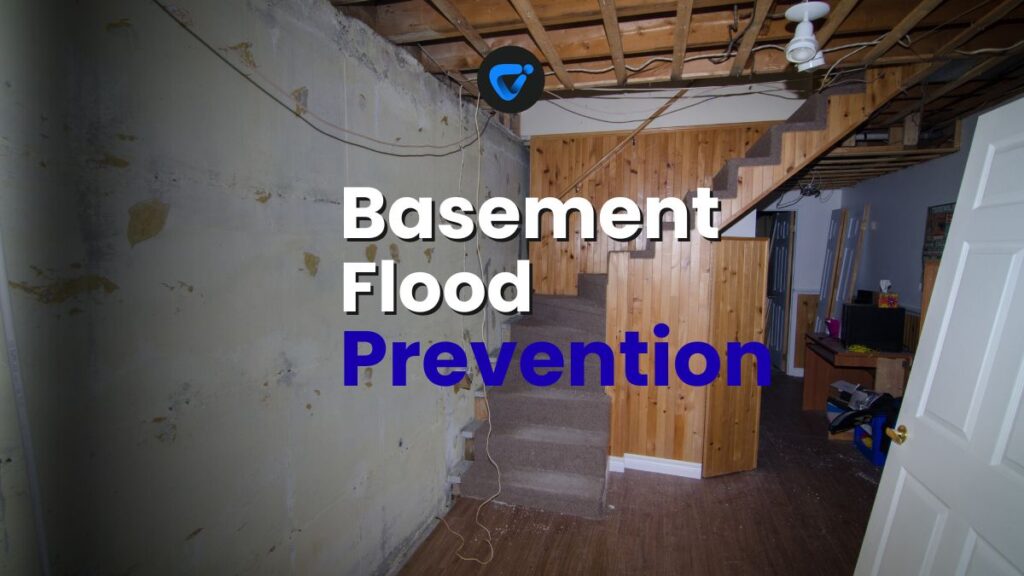
If you’ve ever wondered when to check your smoke alarm, you’re not alone. Integrating smoke detector testing into your cleaning routine means doubling down on both safety and home maintenance — and that’s a practical win.

Preventing Basement Flooding
Keep your basement dry! Discover simple upgrades that stop flooding and protect your home from costly water damage.
Missing a regular check can mean missing the early warning that prevents serious damage. Proactive homeowners set reminders, swap out batteries, and treat smoke detector care as part of a greater home cleaning rhythm.
By reading further, you’ll see exactly how to conduct smoke detector testing, create a battery rotation schedule, and keep your loved ones secure with expert-level micro-checks anyone can do.
Building a Foolproof Smoke Detector Testing Routine
Establishing a reliable smoke detector testing habit protects your household from hidden hazards. The ideal plan ties directly to common cleaning days, ensuring you never skip a test.
Set a recurring alert on your phone for the day you vacuum your living room. That way, if you’re already up on a stool dusting cobwebs, adding a minute for smoke detector testing feels natural, not like a chore.
Create Timed Reminders That Match Cleaning Habits
People who use the phrase, “I already do the windows every first Saturday,” make it easy to attach a smoke detector test to that same monthly rhythm. Consistency pairs with routines you already follow.
Sync smoke detector testing with other recurring events. For example, do your test after changing HVAC filters. This approach reduces forgetfulness and ensures each detector gets a check without slipping through the cracks.
Hearing your alarm chirp means you’re building muscle memory for safety. Each time, double-check battery freshness so the signal doesn’t get ignored as background noise.
Use a Visual Log to Confirm Each Test
Apply a small sticker or place a checkmark on a wall calendar in your utility room each time you conduct smoke detector testing. Visual confirmation boosts accountability, especially in busy homes.
If your family works together, pass the log duties around. Assign each person a color or symbol, so you quickly see missed months and address lapses immediately.
Digital tools, such as shared spreadsheets on your phone, give instant feedback if a detector hasn’t been tested. Share them with anyone helping around the house for consistent documentation.
Compare Popular Testing Tools and Schedules
| Tool/Schedule | Use Case | Frequency | Takeaway |
|---|---|---|---|
| Manual Monthly Test Button | All battery-operated models | Every 30 days | Reliable, easy, and recommended for everyone |
| Logbook Calendar | Large homes with several units | Monthly | Track at-a-glance for multiple detectors |
| Shared Digital Reminder | Families or roommates | Monthly or quarterly | Ensures everyone gets notified |
| Integrated “Smart” Home Alerts | Smart devices | Automated as per device | Automatic prompts keep you compliant |
| Professional Inspection Service | Hard-wired systems | Yearly | Best for complex or rental properties |
Organizing Battery Rotation for Peak Performance
Staying organized about battery rotation ensures your detectors never run on a weak supply. Rotate batteries using a “first in, first out” process, much like rotating pantry staples to use oldest stock first.
Keep your spare batteries in a labeled box near your cleaning supplies. Put the older batch on top, moving new purchases to the bottom for a straightforward, maintenance-friendly approach every season.
Assign Specific Battery Change Dates
Choose meaningful seasonal milestones, like setting clocks forward or back, as your cue for battery swaps. For example, “Let’s change the smoke detector batteries this weekend when we set the clocks!” becomes the household script.
- Mark batteries with a permanent marker as soon as you install them. You’ll always know their age at a glance.
- Pick a storage spot outside direct sunlight or high humidity to maintain battery life longer.
- Set up a recurring calendar invite labeled “Smoke Detector Battery Day” for full-home changes.
- Send reminders a week before the scheduled switch, so supplies are on hand.
- Let everyone handle their own bedroom’s detector. It teaches responsibility and encourages follow-through.
Rotating batteries with clear rules and shared responsibility reduces the risk of forgetting a unit—and makes each change part of your annual home upkeep flow.
Disposing Used Batteries Responsibly
Place a closed container in your cleaning closet for used batteries. Label it so everyone dumps old ones in immediately, preventing accidental reuse with other devices.
- Store used batteries until your area’s next local recycling event.
- Check for curbside pickup or drop-off options at hardware stores for efficiency.
- Never toss batteries in regular trash to avoid leaking chemicals or fire hazards.
- Alert other household members NOT to mix new and used batteries when replacing.
- Post a note on your disposal bin with battery guidelines for quick reference.
These tactics ensure batteries aren’t wasted or tossed incorrectly while supporting both home and environmental safety. A visible process helps everyone keep up.
Physical Placement and Environment Make a Major Difference
Examining detector placement identifies risks you can fix today. Mount units on ceilings or high on walls, never behind furniture or in dead air pockets, to catch smoke quickly.
When arranging detectors, think of airflow and daily patterns. Place one in every sleeping area, ensuring alarms alert you before danger reaches occupied rooms, and space others near kitchens, attics, and basements.
Respond If Alarms Sound—Don’t Ignore Tests or Alerts
If you’re home and a detector shrieks during routine smoke detector testing, act out your emergency plan—even if you know it’s just a test. Practice the evacuation script: “Everyone out, meet by the mailbox.”
Reset the alarm and review why it activated, either from test smoke or dust buildup. Wipe it clean with a soft cloth, then press the test button again to confirm it’s clear and ready.
If the alarm never sounds, check battery orientation and snug fit. If the unit still stays silent, replace it immediately. Every test is a rehearsal, not just a mechanical step.
Real-World Example: Adjusting for High Ceilings and Open Plans
In homes with vaulted ceilings, install detectors within 12 inches of the ceiling’s apex for best sensitivity. “We kept missing the stairwell test,” is a common phrase if placement skips high or open spaces.
When you reorganize furniture, look up and make sure detectors aren’t blocked. A quick couch move could leave one sensor stuck behind a bookcase, so walk the house after any major rearrangement.
Include a detector in rooms where people nap, not just bedrooms. Use the script, “Smoke rises, so keep detectors above our heads and clear of curtains or decor.”
Creating a Smoke Detector “Check Up” List for Every Season
Every season shift is an opportunity to run through essential smoke detector testing steps. Make a fast, actionable checklist before or after a thorough home cleaning spree.
This helps prevent accidental neglect, fits into the average cleaning session, and keeps every room monitored for peak safety.
Spring and Summer Quick Checks
Dust grill covers lightly with a microfiber cloth and watch for blinking lights. Record the result with a mark in your tracking log, and replace any faded stickers mid-year to keep dates visible.
If you open windows for fresh air, ensure pollen and dust aren’t blocking sensors. Voice the checklist for others: “Clean, check, and test—don’t forget the basement unit!”
Replace batteries at the end of daylight saving time or after major storms, when power surges are common. Stress the importance: “No dead batteries after the last thunderstorm.”
Fall and Winter Seasonal Rules
When closing windows and cranking up the heat, test alarms after you vacuum to avoid dust-triggered chirps. Sandwich these checks just before or after replacing HVAC filters for maximum efficiency.
Remind everyone that holidays bring extra cooking smoke and candles. Say aloud, “Testing twice before the holidays,” to set the tone for extra caution.
In snowy regions, check detectors in basements or attics for signs of moisture. “Dry and functional,” becomes the winter testing script to lock in reliability, especially during power outages.
What to Do When a Test Fails or the Alarm “Chirps”
When a smoke detector chirps unexpectedly, you need a rapid plan. Distinguish between random single chirps—usually low battery warnings—and continuous alarm signals, which demand immediate action.
If smoke detector testing fails, swap the old battery for a fresh one and retest. If performance doesn’t improve, replace the detector right away instead of taking a chance.
Decoding Chirp Patterns and Error Sounds
A detector that chirps once a minute indicates a dying battery. Announce: “Grab a new battery!” and silence it within the hour. Continuous or erratic beeping may reveal sensor failure, dust, or wiring trouble. Clean the unit or consult an electrician.
Three rapid beeps may signal an environmental hazard or a hardware fault. Trust the sequence on your unit’s sticker or user manual to decipher specific codes. Stay proactive and never ignore unfamiliar sounds.
If your unit is over 10 years old, chirping can mean it’s expired—not just advertising a dead battery. Replace with an updated model and note the install date near the alarm.
Establishing an “Emergency Swap” Kit
Keep a plastic bag with two fresh 9V batteries and a mini screwdriver in your cleaning closet. The script is: “If there’s a night chirp, swap now, not tomorrow.”
Rotating these batteries out annually ensures you’re never caught off guard. Tell family members where to find the kit and write instructions on the bag for clarity.
This one-step micro-guide can save you stress and keep everyone familiar with the fix, no matter their age or experience level.
Upgrading Old Smoke Detectors for Modern Reliability
Introducing advanced detectors protects your home against changing risks. Newer models detect both fast flames and smoldering smoke, making regular smoke detector testing even more relevant for complete micro-guide maintenance.
Choose models with sealed lithium batteries, voice alerts, or wireless interconnects if your home’s layout is complex. These upgrades create a stronger web of warning signals throughout your space.
Replacing Outdated Units in a Step-by-Step Process
Write “Replace smoke detector” on your calendar every ten years. Check your device’s label for a manufactured date; if it’s faded or illegible, swap it right away. Newer alarms come with mounting templates for easy installation.
While installing a modern detector, always read the short “test weekly” section. Voice it: “Every Friday after chores, we hit the test button until it beeps.” This repetition embeds the habit for the whole family.
Store all receipts and instruction manuals in a labeled binder with other home info. That way, you can review warranty details or troubleshooting guides without searching through piles of papers.
Integrating Smart Detectors With Your Routine
Download your smart detector’s companion app to receive test reminders and get status reports. Configure settings so everyone who lives in the home gets alert texts if a test is missed.
These units still need manual smoke detector testing. The difference is, smart models track last test dates and offer action checklists—so you can say, “Missed a test? Let’s hit the button now.”
If you use professional monitoring services, verify the company receives signal tests too. Always test the audible alarm yourself, even with network updates, so you know your household won’t miss crucial warnings.
Conclusion: Keeping Your Home and Routine in Sync
Routine smoke detector testing and timely battery rotation matter as much as any other cleaning task. When integrated into regular home upkeep, these micro-guides easily become habits that pay off in peace of mind.
Every step, from making a checklist to creating a household script, helps eliminate gaps. Transparency and involvement keep everyone invested and ensures your system works as intended, whether you’re home or away.
The simplest actions—a battery swap, a test beep, a calendar check—form the strongest defense. Prioritize these small home cleaning steps to help every room, and every person, stay safe without stress year-round.
Frequently Asked Questions
Every household should run smoke detector testing once a month by pressing the test button until the alarm sounds. Pairing this task with a cleaning routine prevents forgetfulness and ensures consistent results.
If it chirps after a fresh battery, clean the detector and check for dust near the sensor. Persistent chirping means the unit may be at end of life—replace it promptly for reliability.
Smart models add wireless alerts and convenient scheduling, but basic detectors work well with organized testing and battery routines. Upgrade for features like voice alerts or if your home layout has hard-to-hear areas.
Manufacturers recommend standard alkaline or lithium batteries, not rechargeables, since rechargeables discharge unpredictably and may not last a full year. Always check your smoke detector’s instructions for compatible battery types.
Collect used batteries in a marked, closed container until your nearest recycling drop-off day. Never throw batteries in the trash—they can leak or cause fires. Involve all household members to maintain this safe practice.

Simple Lubrication Tips for Sliding Doors
Keep doors gliding smoothly! Follow these simple lubrication tips to fix sticking sliding doors fast. Read on and learn more!


